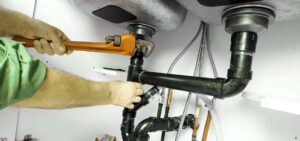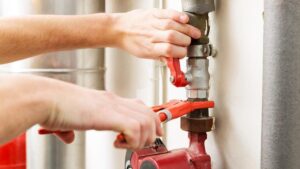Having hardwood floors in your home? Then you’ll inevitably require floor sanding or buffing at some point. The versatility of hardwood flooring is that you can refinish and make them look new anytime. Hardwood floors can last for decades if taken care of properly. Floor sanding and buffing are two of the best techniques to revitalize your dull and old hardwood floors. However, many homeowners are confused between the two.
In this guide, we’ll discuss what these techniques are and how one is different from another. So, let’s get going.
Introduction
- Floor Sanding
The method of removing top surface layers from a wooden floor using abrasive materials is referred to as floor sanding. This is one of the initial steps of all floor renovation projects. You’ll only need to sand your hardwood floors when their finish has worn out completely, or when they require repair to the damages and scratches.
- Floor Buffing
On the contrary, floor buffing is the process of just smoothing out the top, thin layer of hardwood floors using less aggressive abrasive tools as compared to floor sanding. It can give the floor a shiny and attractive luster by removing minor scuffs and scratches. Sometimes, hardwood floors require buffing every three years to maintain their appearance.
Procedure
- Floor Sanding
The overall process of floor sanding is completed in three steps:
- The initial step is the cutting or stripping phase in which a low grit sanding paper is used to cut through the top surfaces wither of the exposed wood or the varnish.
- Smoothing out the surface is the second step of the floor sanding process. Here medium grit sanding paper is used to remove the remaining imperfections left by coarser grit.
- And finally, the floor is coated with a protective sealant to get rid of all the imperfections.
- Floor Buffing
Buffing is the final step of floor renovation projects. It can be done via:
- Spray Buff
In this process, high-pressure liquid is used to buff the surface. This type of buffing is ideal for surfaces covered with grime or dirt.
- Dry Buff
This process is done by using floor buffing pads such as microfiber, fine sanding paper, buffing cloth, etc. Dry buffing will result in a smooth, shiny surface.
Advantages
- Floor Sanding
- Floor sanding makes hardwood floors look attractive and beautiful.
- It increases your home’s reselling value.
- It removes dents and scratches from the floor.
- Floor Buffing
- Preserves the natural color of the floor.
- Restores the original beauty of the floor.
- It restores the beauty of hardwood floors.
- Extends the life span of the floors.
Bottom Line
So, did you guys get it clear how floor sanding is different from floor buffing? Both techniques bring the hardwood floors back to their original look. However, the only difference is that floor sanding involves polyurethane sealer and removes damage parts of the wood whereas floor buffing only gets rid of damaged polyurethane sealer without touching the wood. So, if your hardwood floors are beginning to dull and old, get in touch with the professionals!




